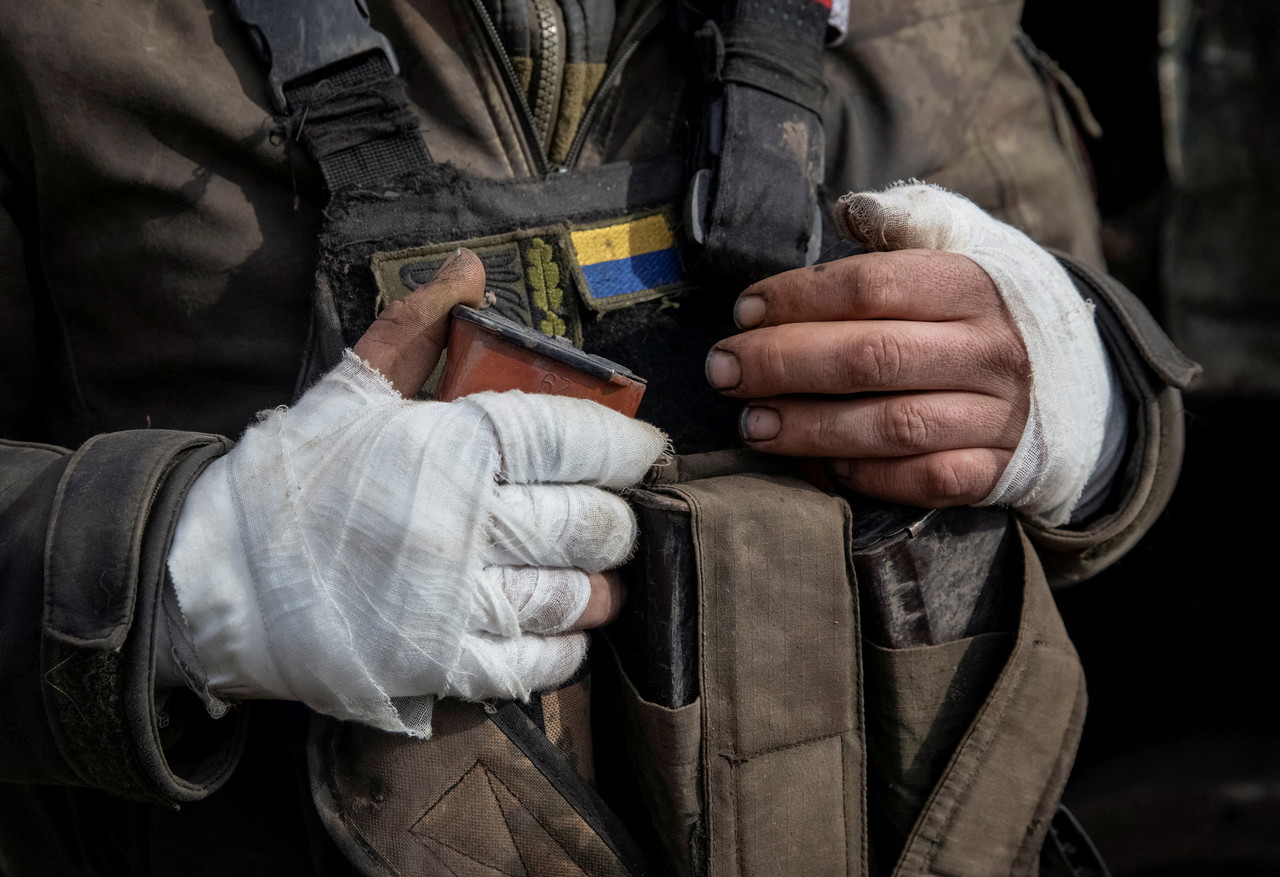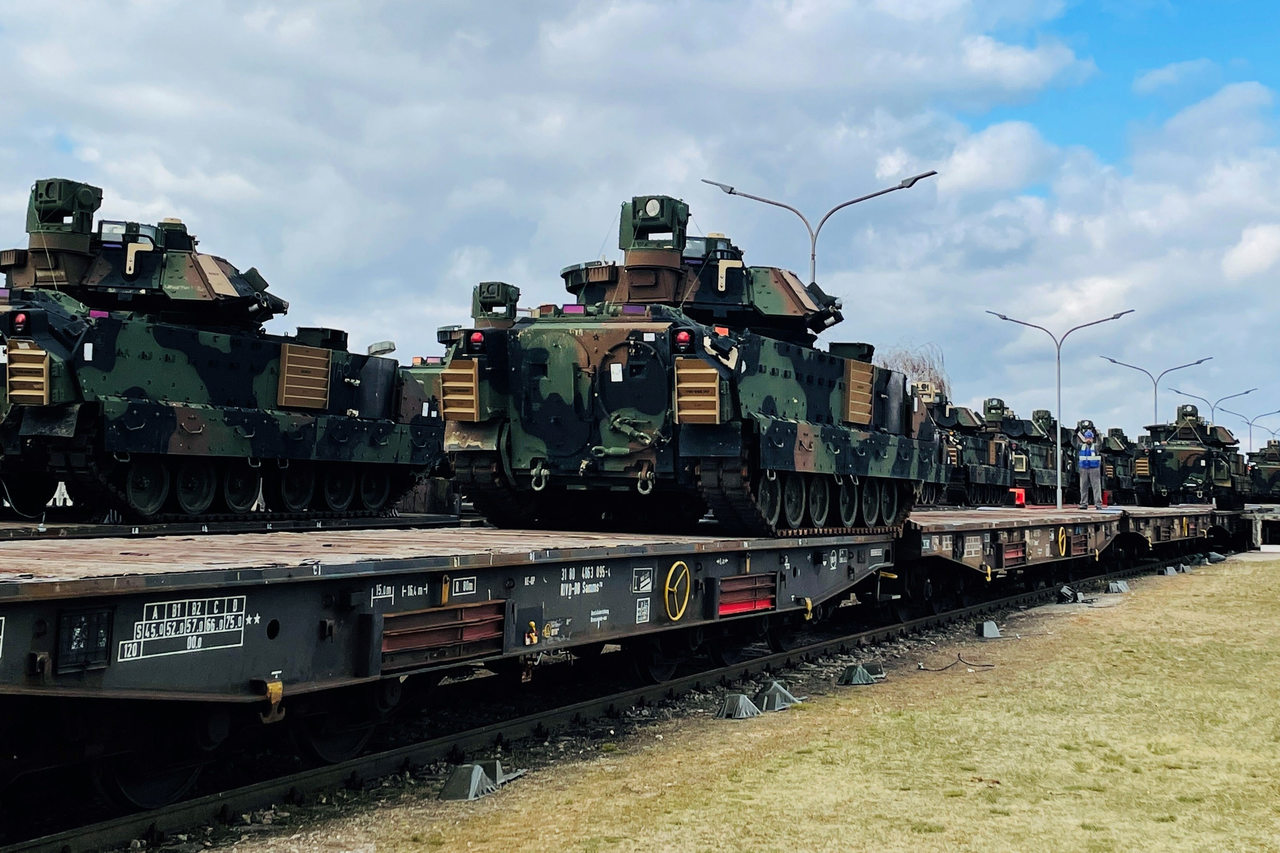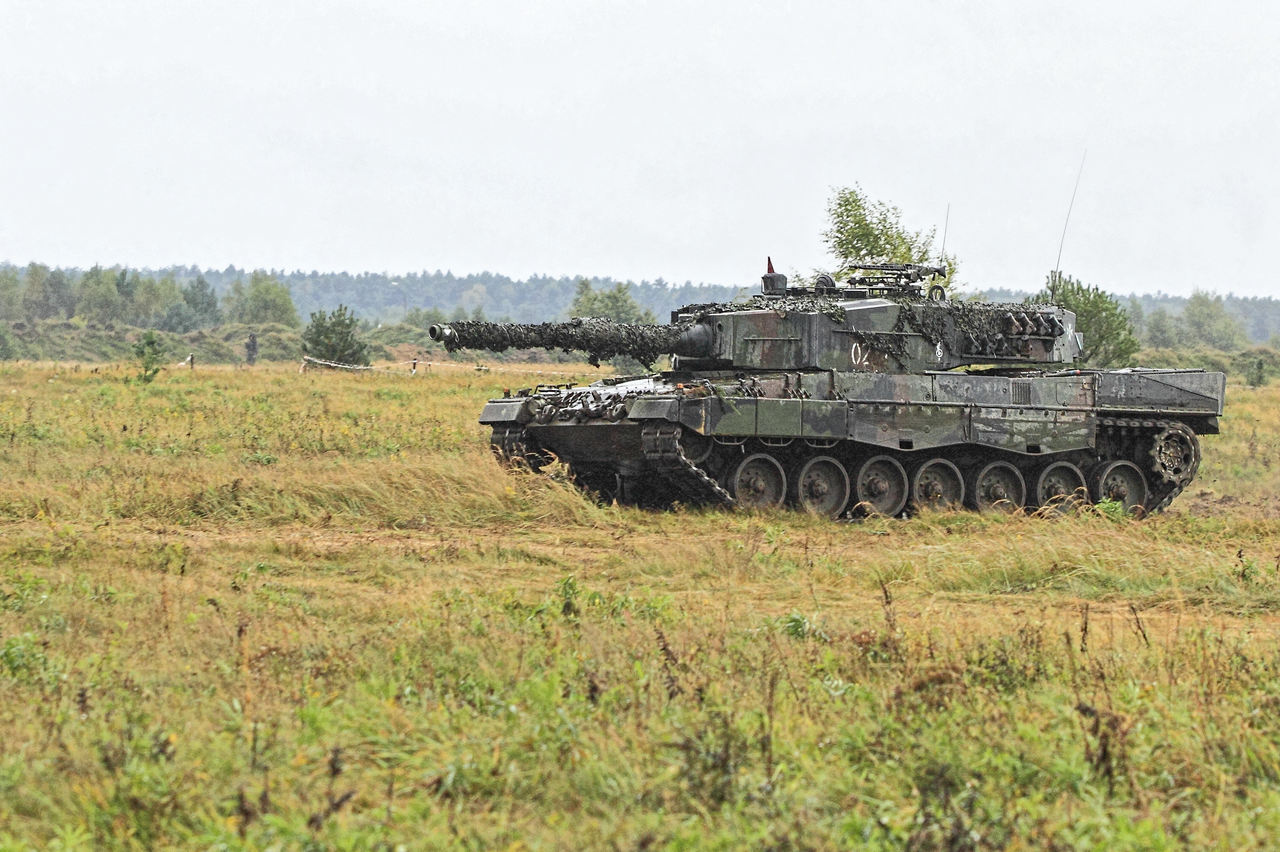In recent weeks, the heaviest fighting has been taking place in the Donetsk region, especially in the city of Bakhmut. Its capture is important for the Russians both for propaganda and military reasons because it may facilitate a further westward offensive, among other things. The need to effectively stop the Russian actions means the importance of rapid deliveries of Western equipment to Ukraine and training of Ukrainian soldiers conducted in NATO countries is growing.
 STRINGER / Reuters / Forum
STRINGER / Reuters / Forum
What has been the course of the fighting in Bakhmut?
The Russian offensive towards Bakhmut began in early August 2022. Since then, the Ukrainian Armed Forces (UAF) have been defending the city, which is important for military reasons. If the Russians capture it, that may make it easier for them to strike towards Kostiantynivka and Druzhkivka or Kramatorsk and Sloviansk. It will also make it possible to level the front line, which will make it easier for the Russian troops to defend themselves and frustrate Ukrainian counter-offensives. For the Russians, the capture of Bakhmut also has an important propaganda meaning in that it would indicate some success in meeting the political tasks set by the Russian authorities, among which is the complete capture of Donetsk Oblast.
The intensification of the battle for Bakhmut has been part of the offensive operation planned by the Russians for the end of winter. Overall, it has failed partly as a result of the Ukrainians’ effective defence but also thanks to weather conditions—the lack of prolonged frosts prevented the Russians from using armoured equipment on a larger scale.
Bloody battles are taking place in Bakhmut (both sides report inflicting high losses on the enemy) and more and more often there are reports that the Russians are present in the north or east of the city. The defence is hampered by Russian artillery fire on the roads leading west out of the city. According to reports from the Ukrainian General Staff, at least several hundred clashes involving artillery shells and direct fighting have taken place in recent days. For military operations, apart from regular motorised units, mercenaries with the Wagner Group are being used. They had a significant role in the capture of Soledar, north of Bakhmut. Among its ranks are prisoners turned mercenaries, who are suffering high losses as a unit because they are thrown into the toughest fighting. However, this has not significantly affected the calculations of the Russian authorities or commanders.
What is the situation on the other sections of the front?
At present, the most intense fighting is taking place in the Donetsk region and, apart from Bakhmut, is concentrated in the directions of Vuhledar and Avdiivka. The capture of Vuhledar would be significant to the Russians as it would enable them to move the Ukrainian forces away from a railway line that is important for supplying the Russian forces. Fighting is also taking place in the forests in the vicinity of Kupiansk (Kharkiv Oblast), and it cannot be ruled out that the Russians will want to take offensive actions directed south, towards this city, along the Oskil River and possibly further towards Sloviansk. So far, the UAF have been able to oppose Russian actions aimed at both gaining more Ukrainian territory and increasing the security of their rear, which is necessary, among others, to consolidate control over the occupied territories. On the remaining sections of the front, in the Kherson and Zaporizhzhia regions, there are currently no military operations, apart from special forces operations and artillery fire. Russia also conducts regular missile attacks all over Ukraine.
Does Ukraine have a chance for another counter-offensive?
Repulsing the Russian attacks and preventing them from taking a broader offensive is a necessary first element for the UAF to be able to undertake effective counter-offensive activities in the next few months. April, when the weather will be more favourable (the end of the thaw period), is more and more often indicated as the probable time for a counter-offensive. Moreover, at the turn of February and March, the UAF held staff exercises to analyse various scenarios. One of the possible directions of attack is towards the Sea of Azov and would be aimed at separating the Russian forces and breaking the land connection between the occupied Crimea and Russia.
At present, it is also visible that Ukraine is working towards recreating and strengthening the combat capabilities of key units, mainly the tank and mechanised forces. Soldiers and freshly mobilised recruits are trained intensively. Ukraine is also trying to gather equipment in the immediate vicinity of possible operations. What is more, Ukraine has sufficient human resources to carry out a counter-offensive, but success will require further support from the international coalition that supplies Ukraine with equipment and armaments.
What are the prospects for further deliveries of Western equipment?
The speed of deliveries promised in 2023 by the international coalition and the intensity of training of Ukrainian troops will be crucial for the success of a possible Ukrainian spring counter-offensive. It is particularly important to speed up the transfer of subsequent tranches of tanks to Ukraine (especially the Leopard 2, several dozen of which have been declared will be transferred, and so far about a dozen have been, with another dozen to be delivered by the end of March), and infantry fighting vehicles necessary to accompany tank and mechanised units both to repel the Russians and to regain occupied territories. Fast deliveries of artillery systems, including long-range rocket artillery, along with a significant supply of ammunition are also crucial. A very important decision would be, for example, the transfer of ATACMS surface-to-surface missiles that can be launched from the HIMARS systems. This will allow Ukraine to attack Russian forces at their rear, making it difficult to equip and provision them. It will also be important to accelerate and increase deliveries of air defence systems that provide cover for key elements of critical infrastructure and significantly impede the use of the air component by the Russians on a large scale, limiting their offensive capabilities. It is also increasingly important for NATO countries to make a decision soon whether to transfer combat aircraft to Ukraine, including the MiG-29, which Poland and Slovakia have but have stopped using, or other types, such as the F-16, on which Ukrainian pilots are already being trained. Without a clear delivery schedule, speeding up the transfer of the declared equipment and increasing its quantity, it will be difficult for Ukraine to carry out activities aimed at regaining the territories occupied by the Russians.
Moreover, it is still very important to maintain Western intelligence support, including help in assessing feints and real directions of attack that pose the greatest threat. It is also important to continue treating the wounded, which is an important element of Ukraine’s maintenance of its combat capabilities.





.png)

